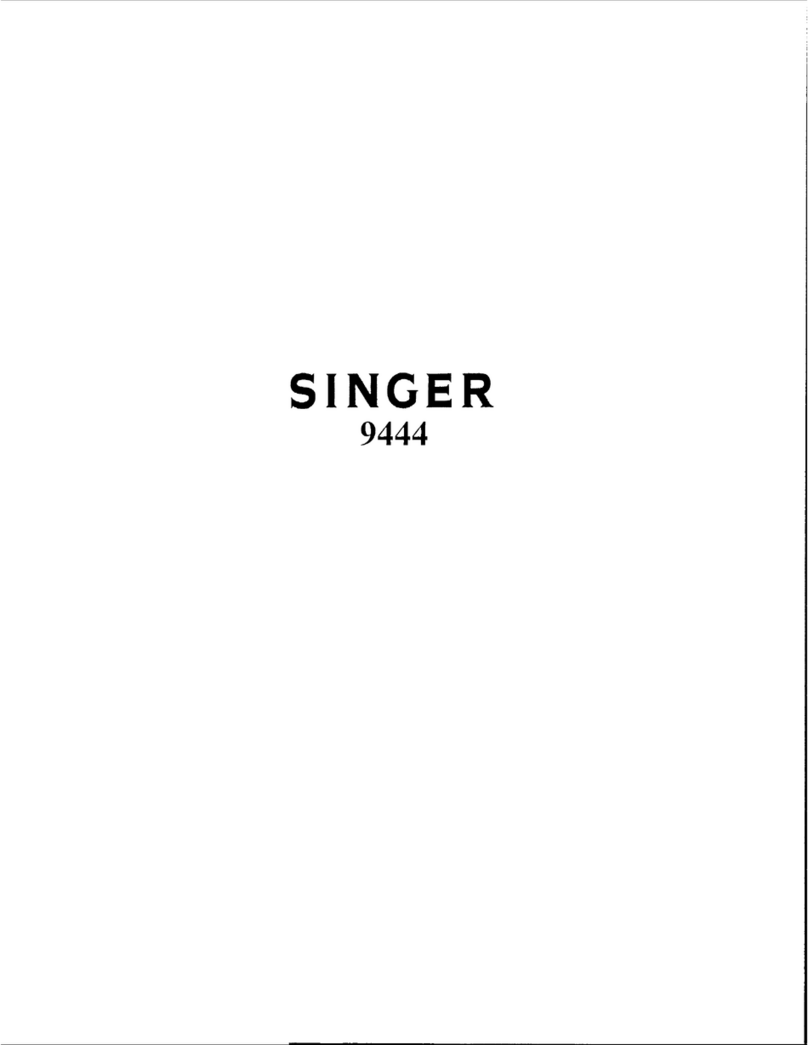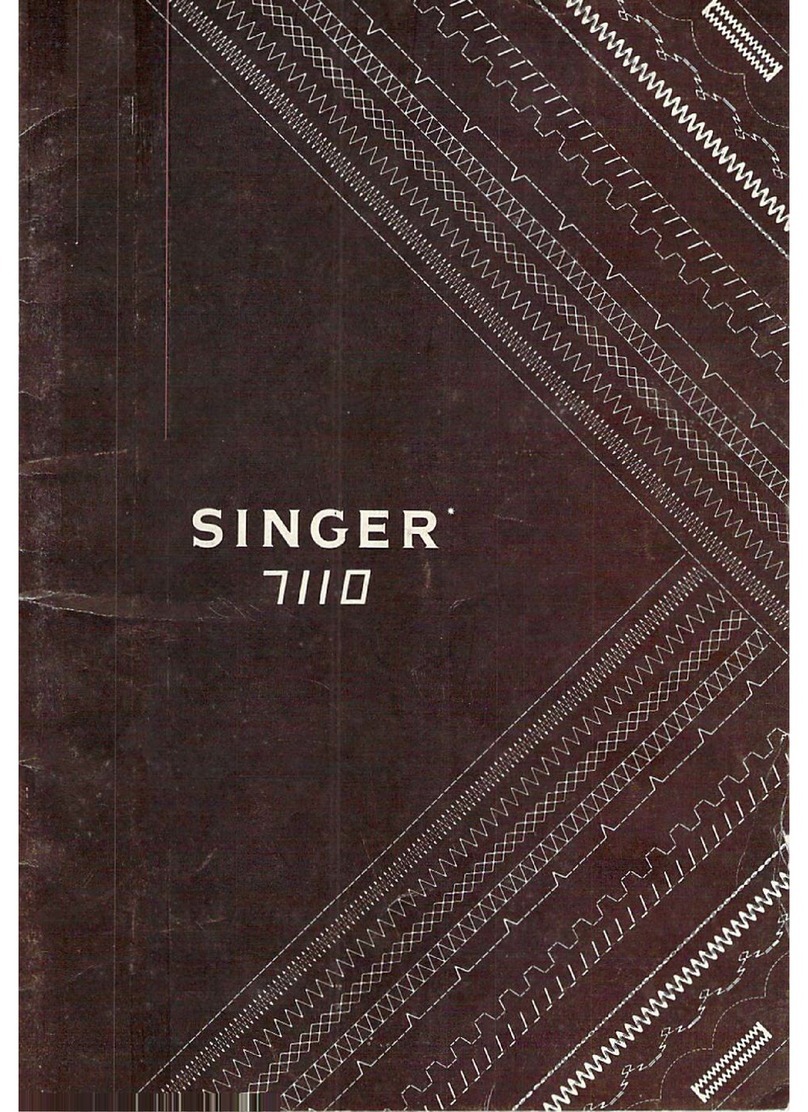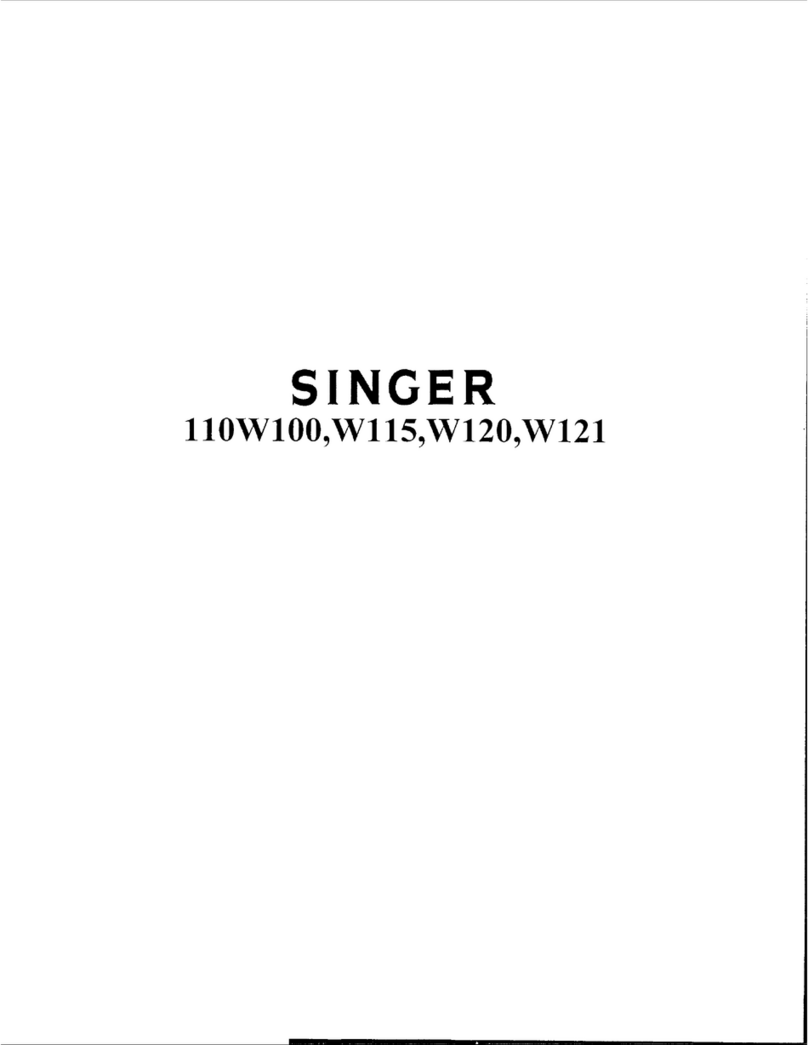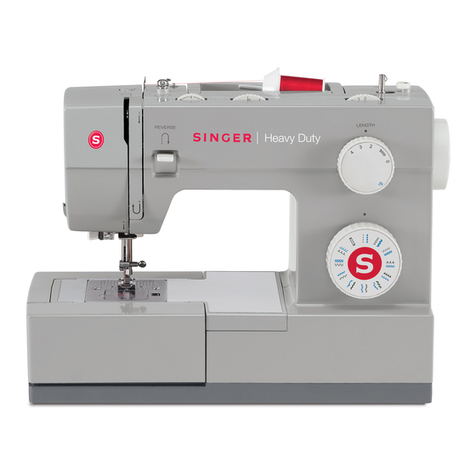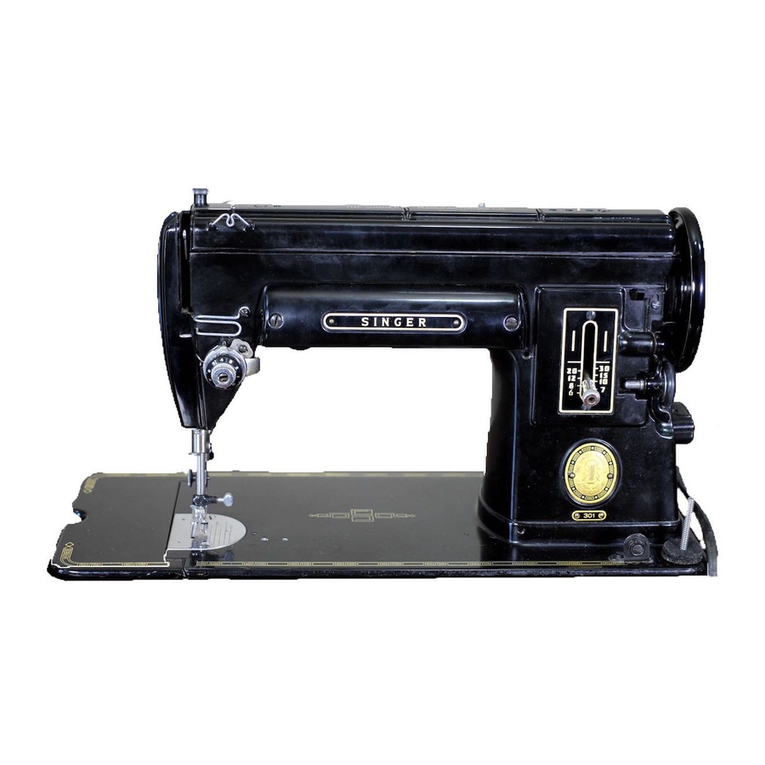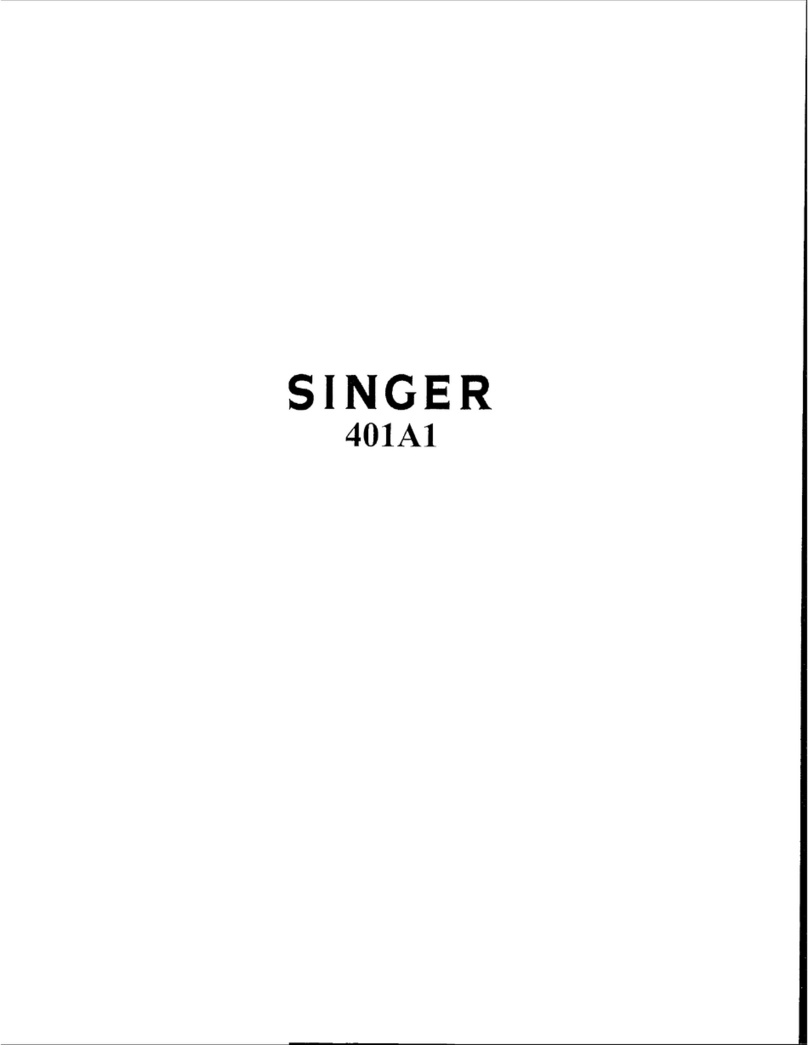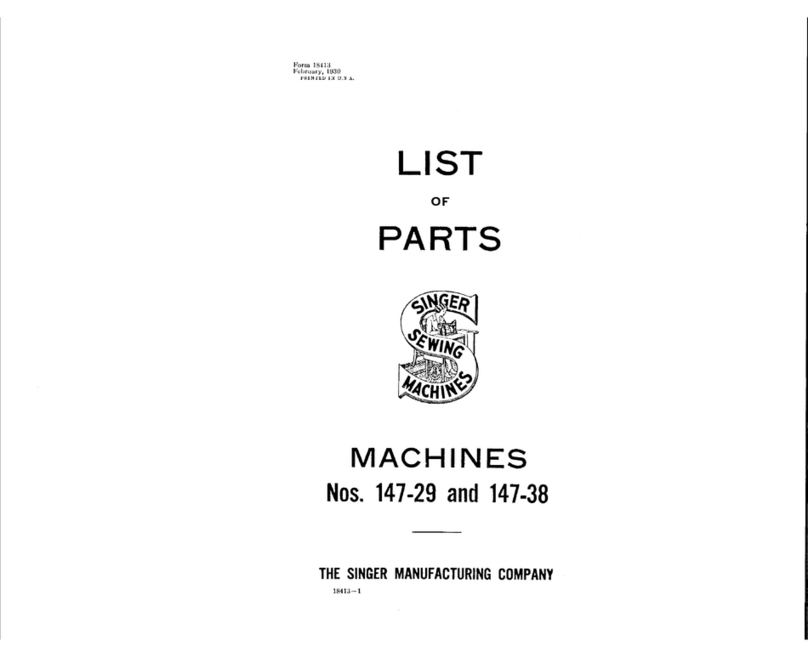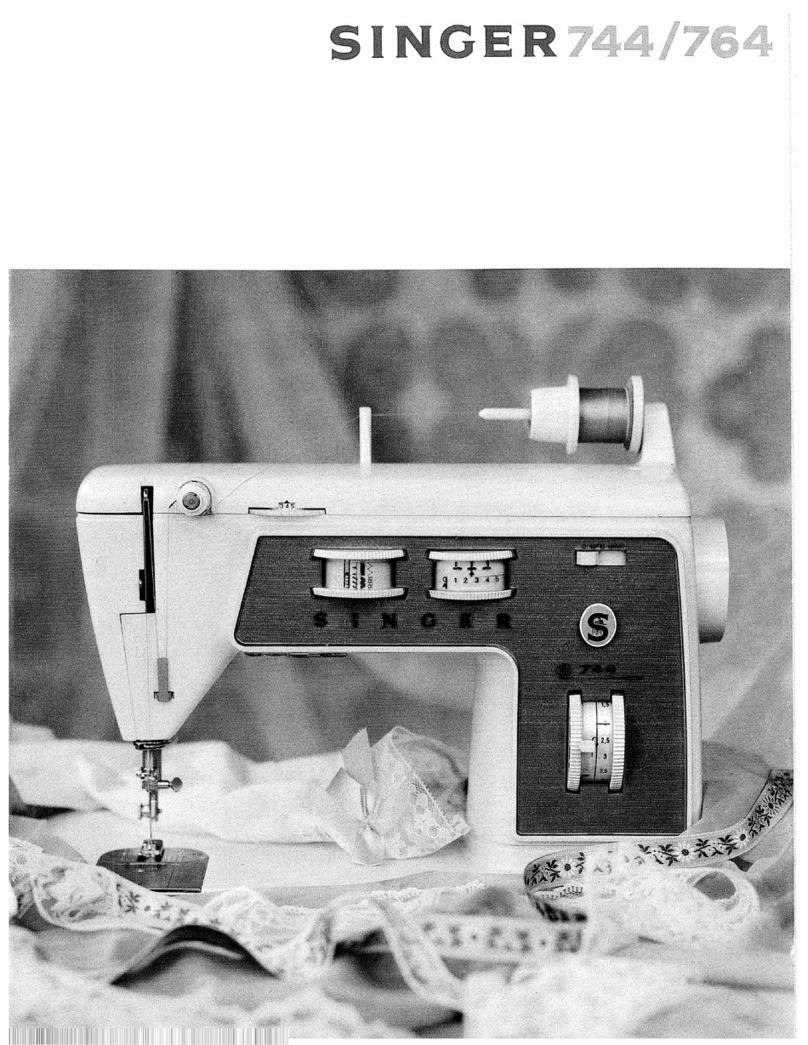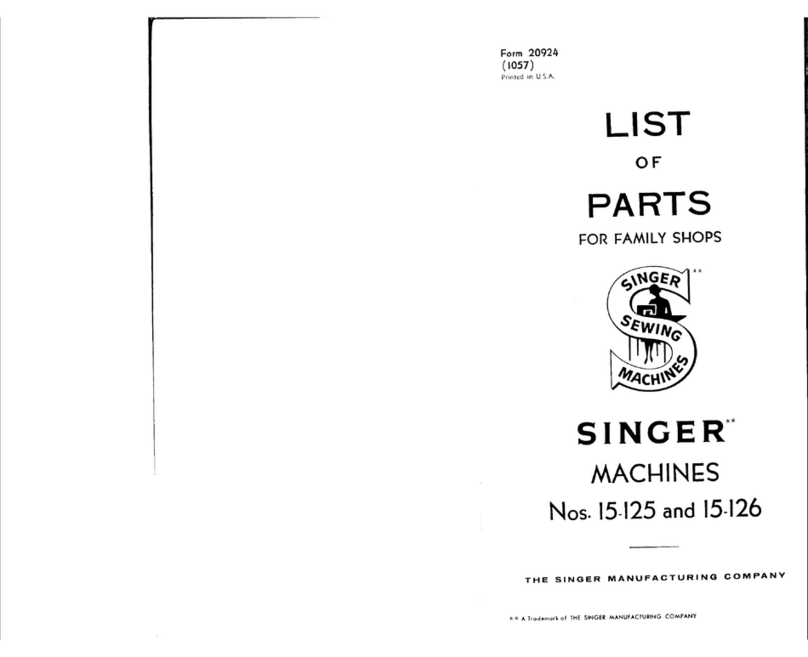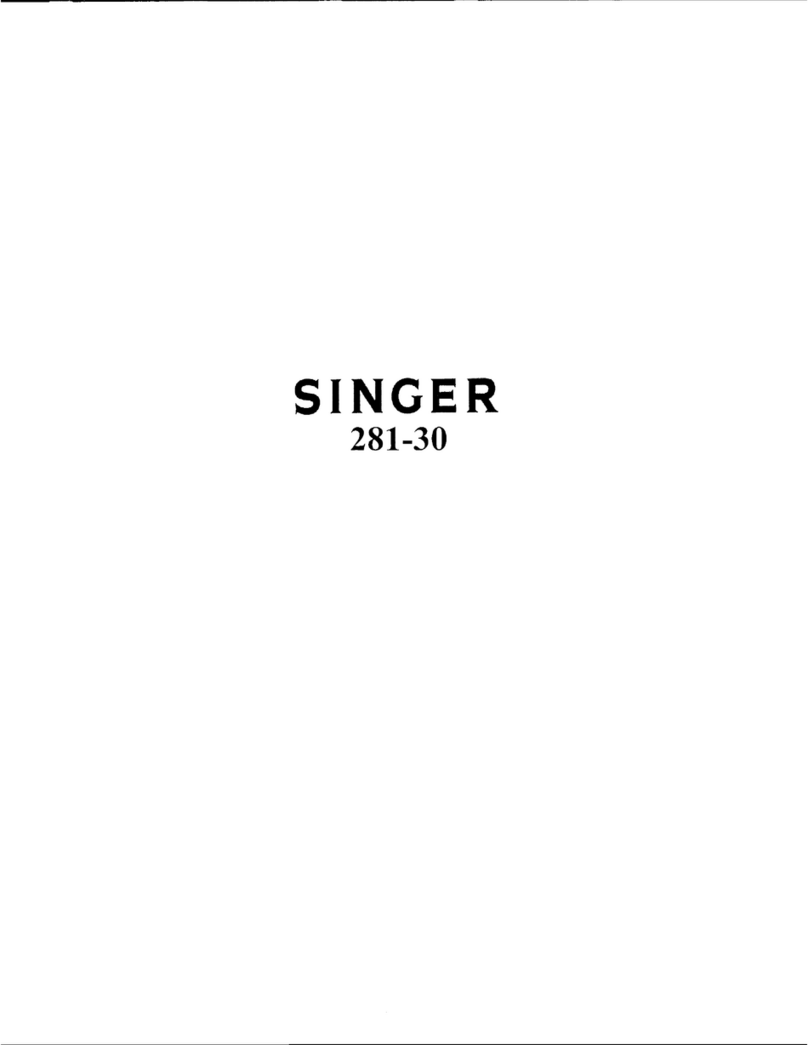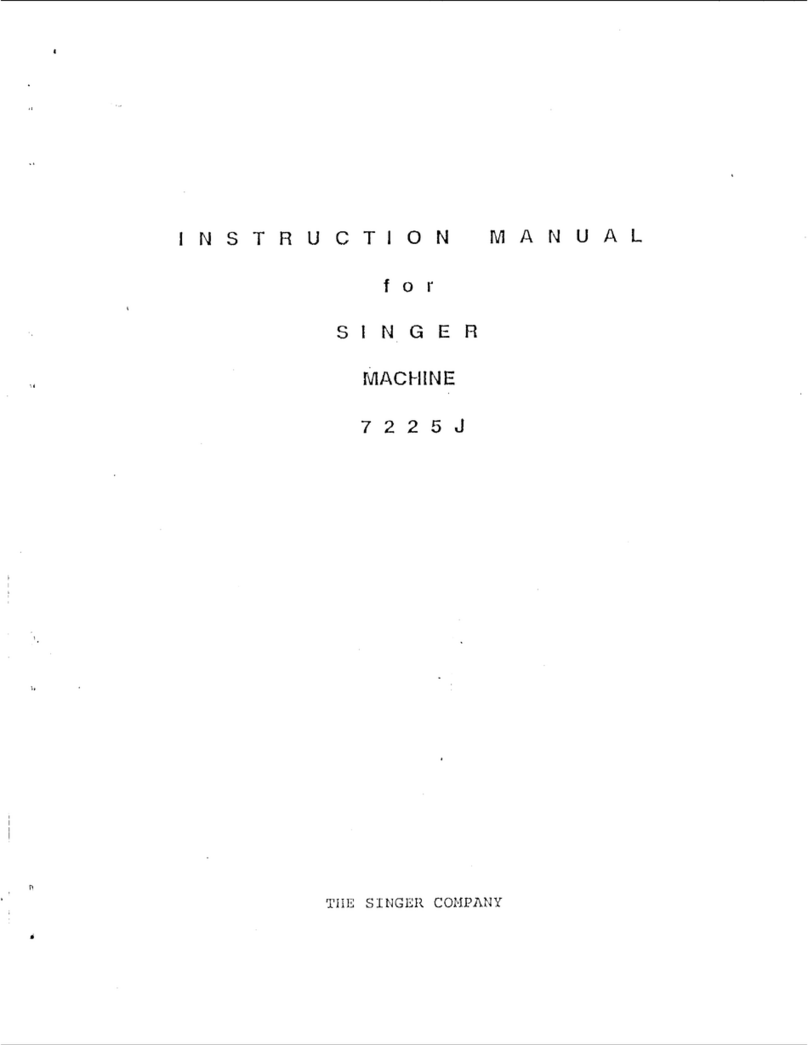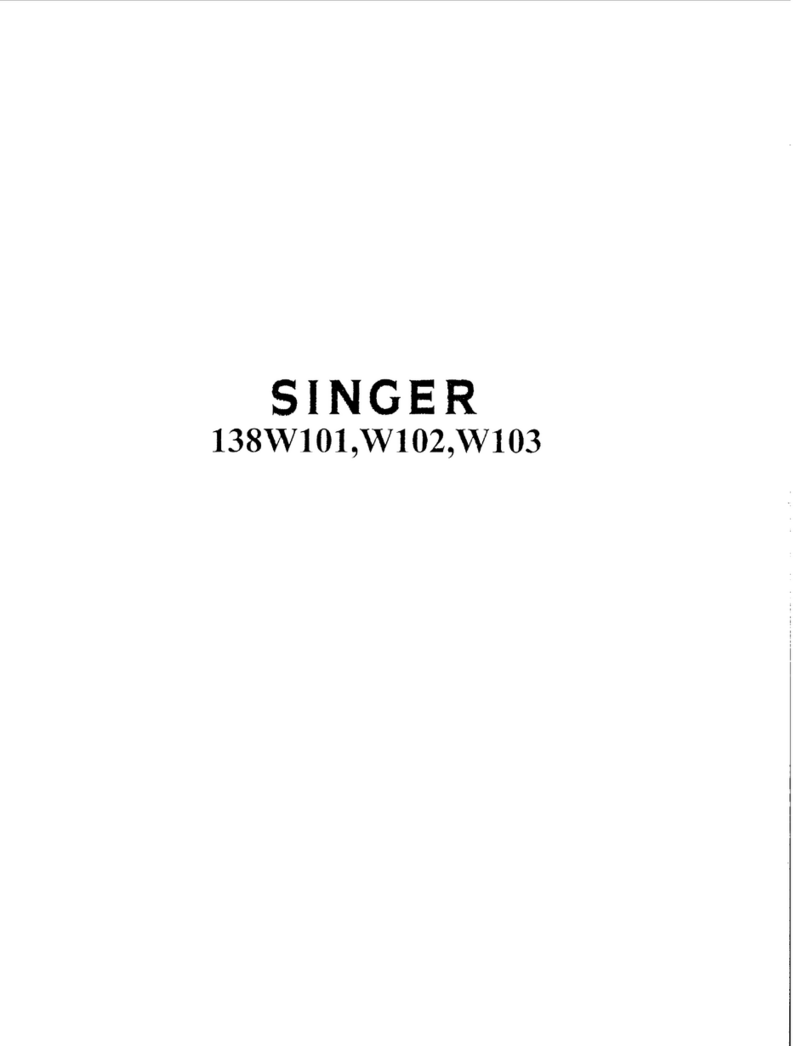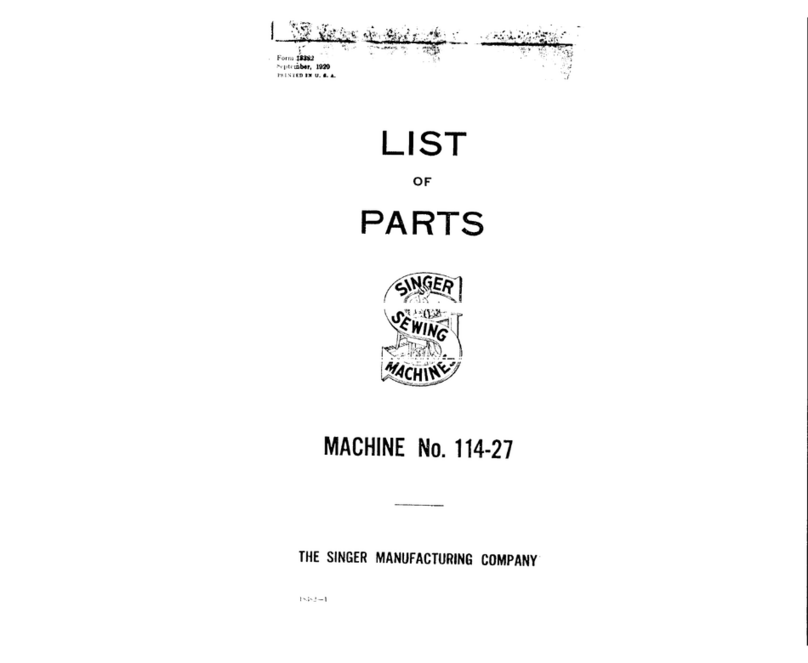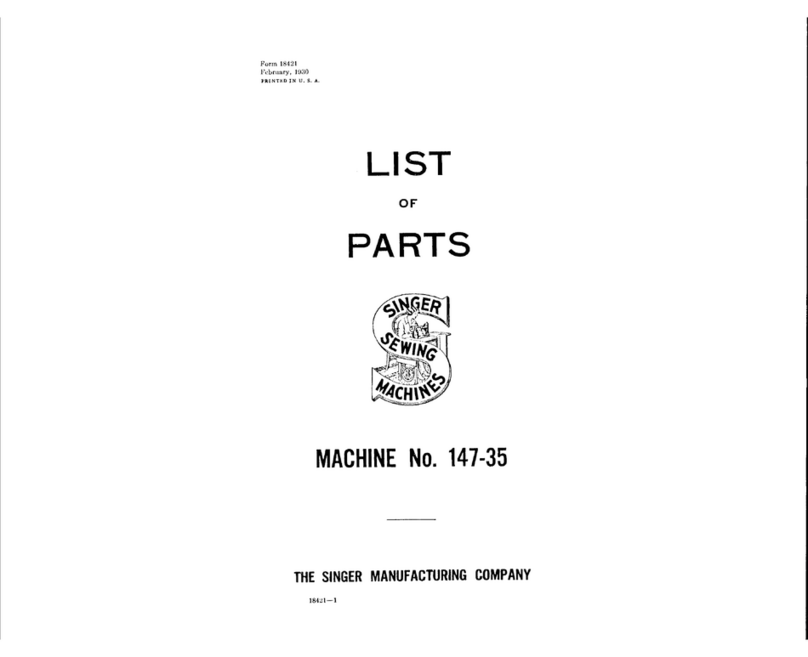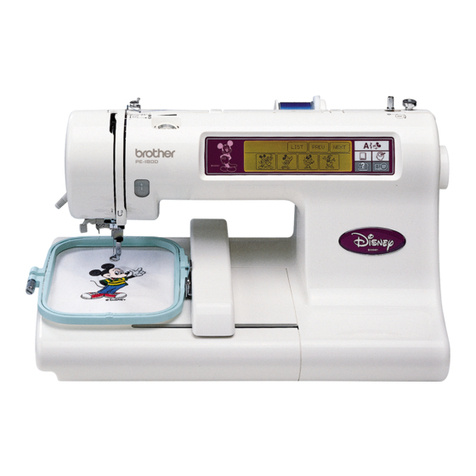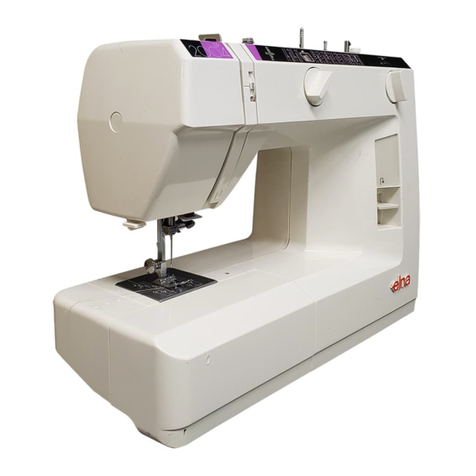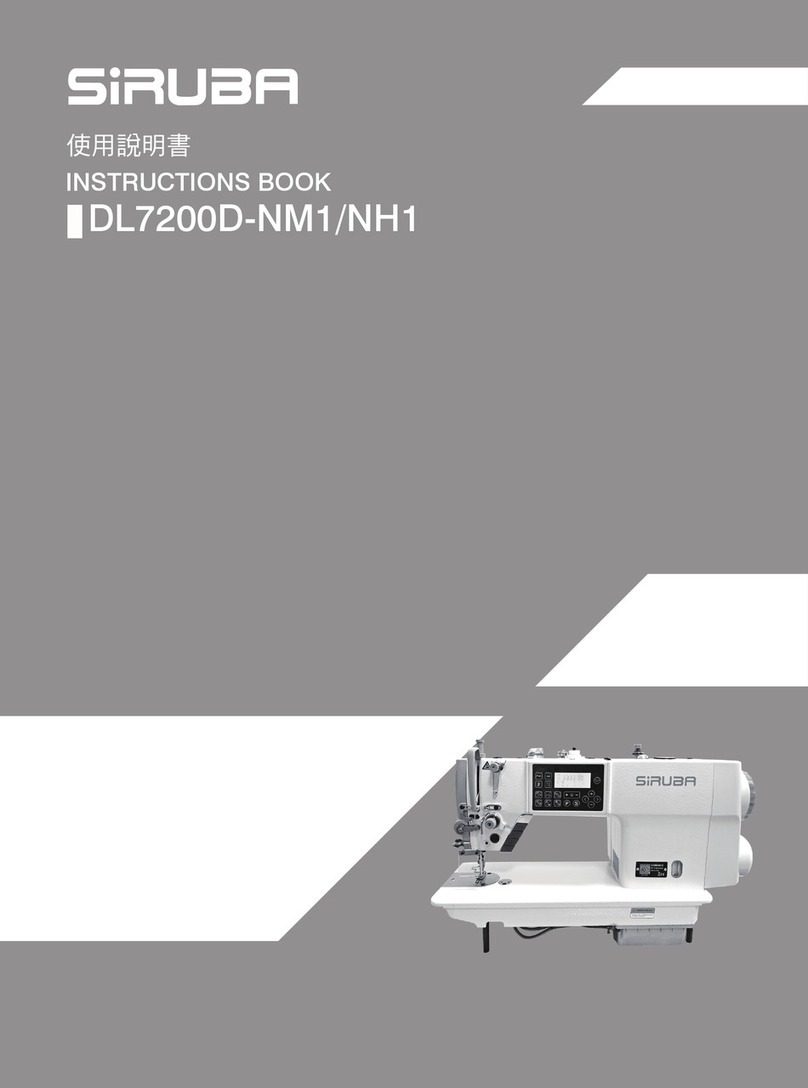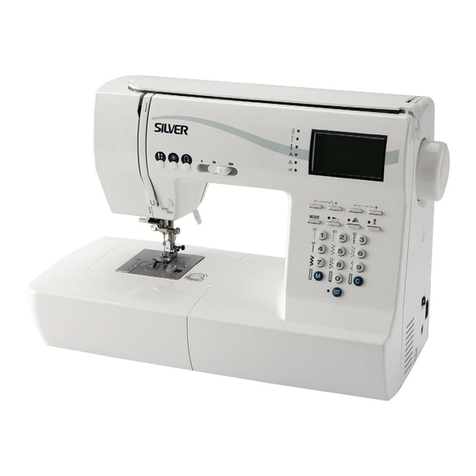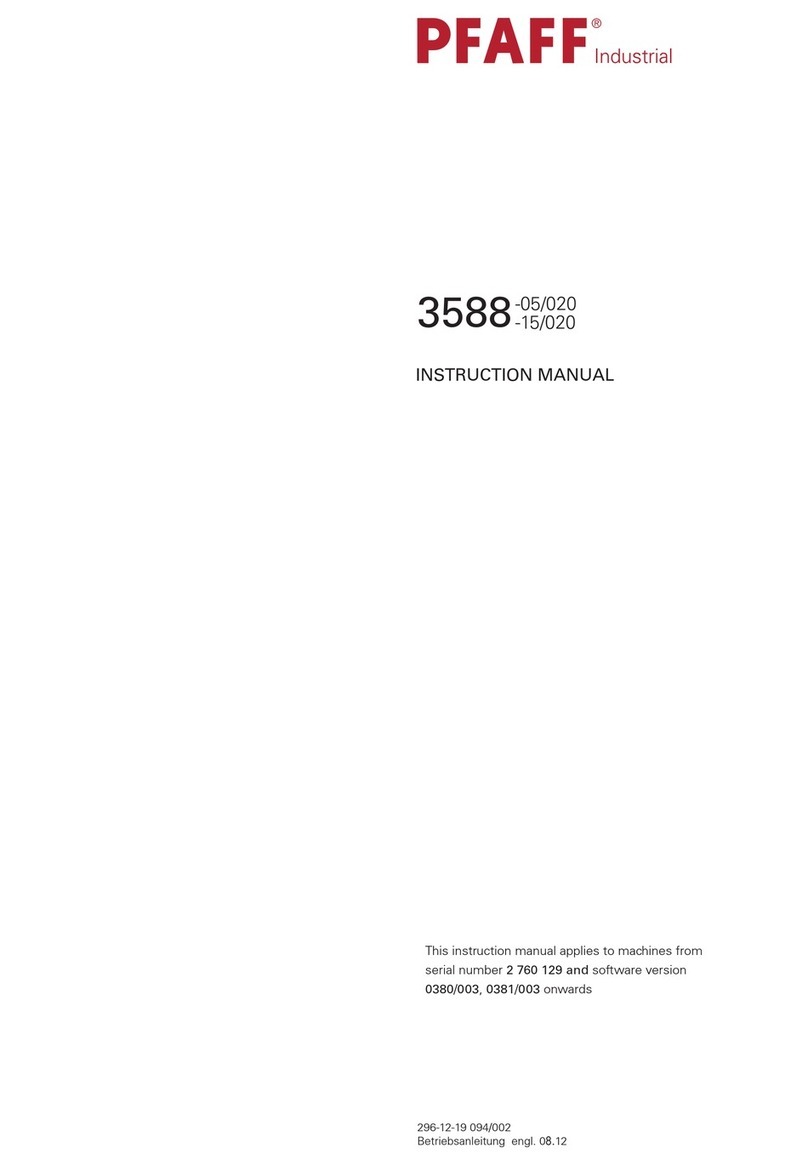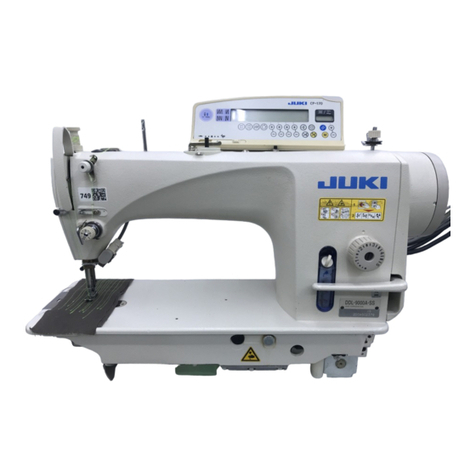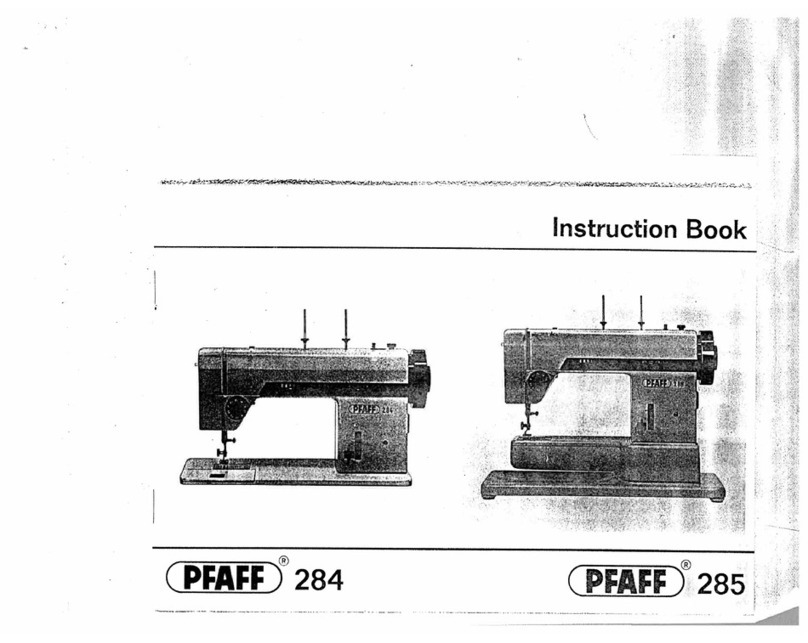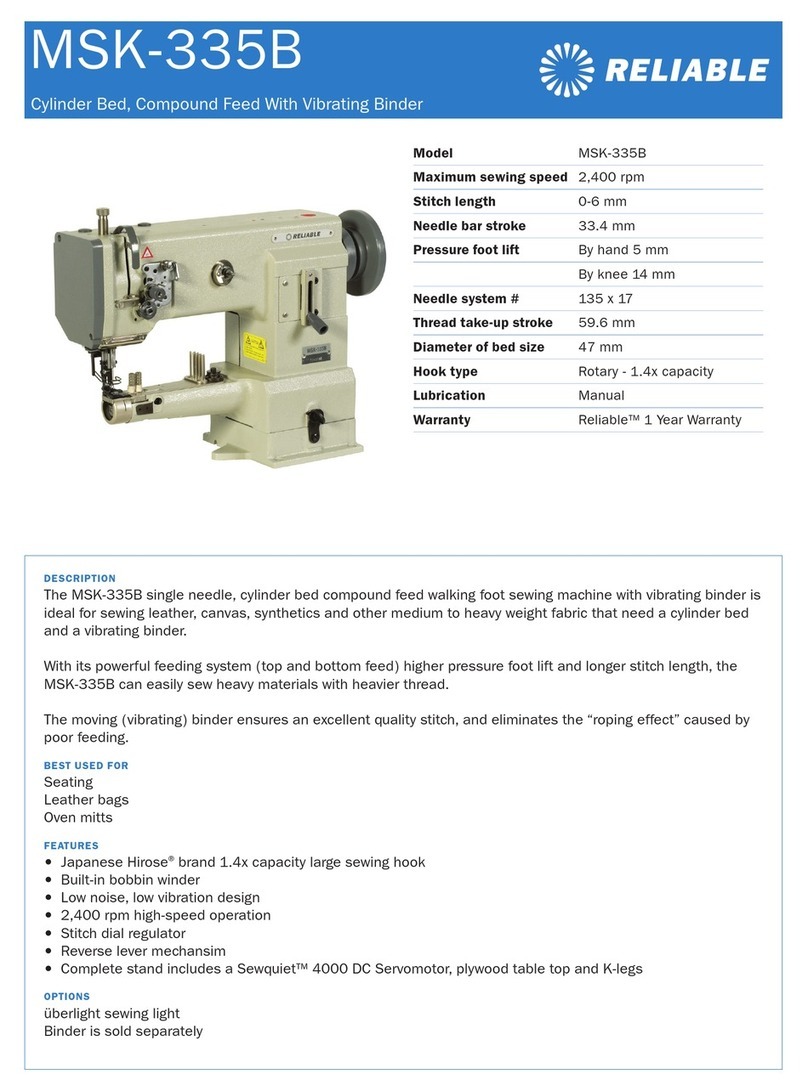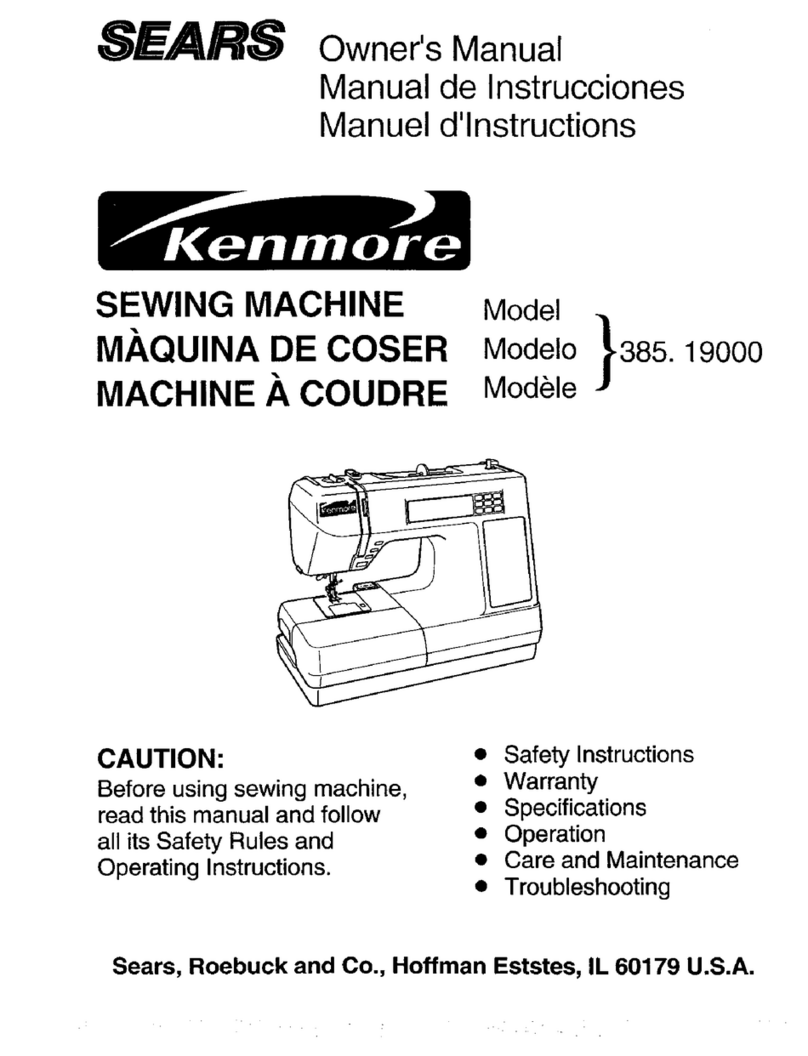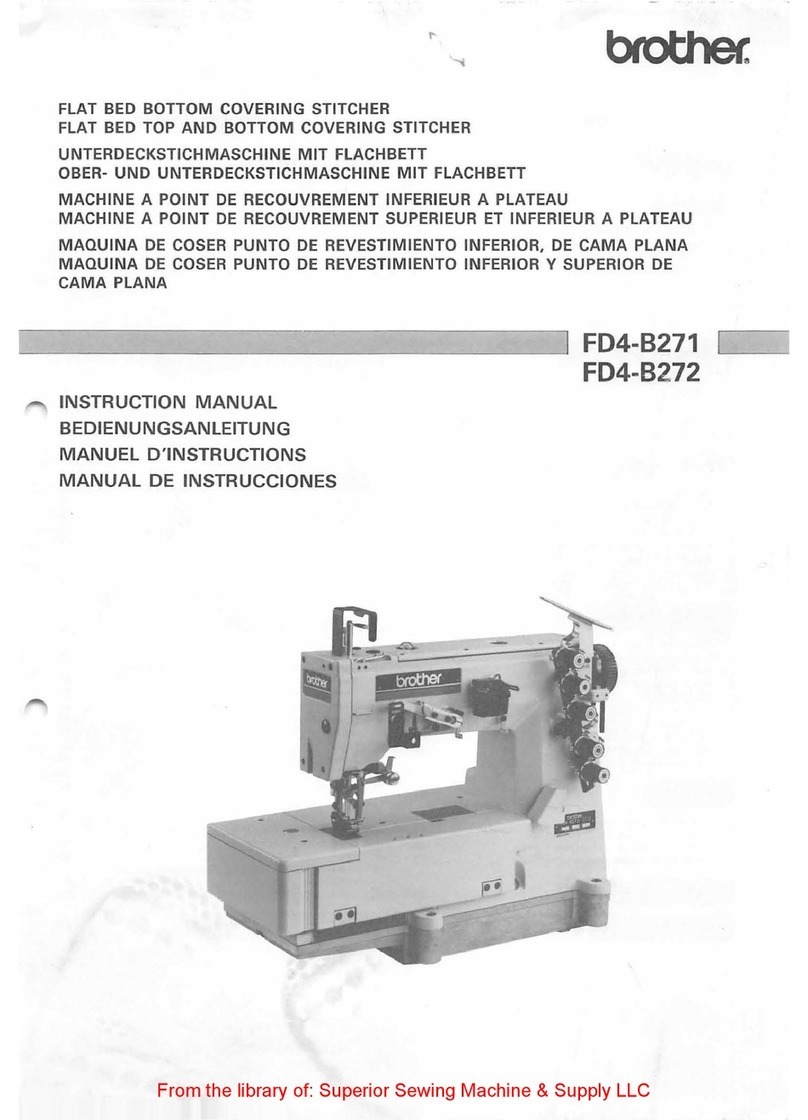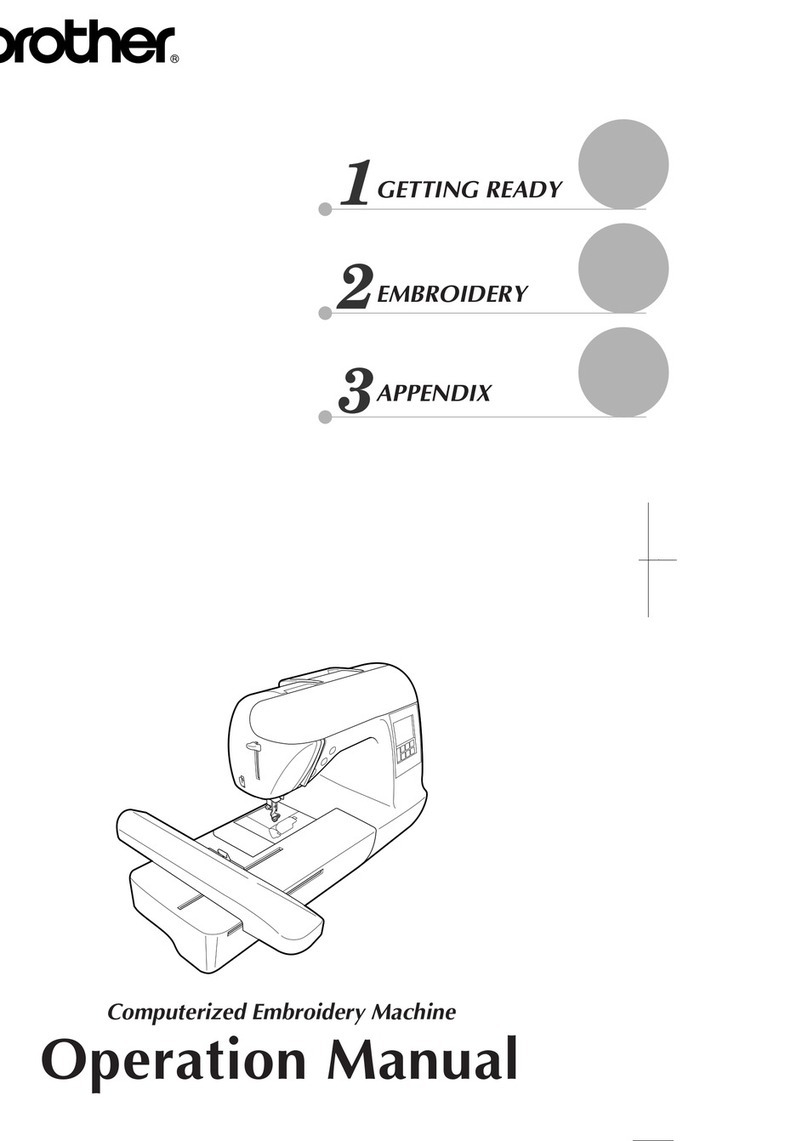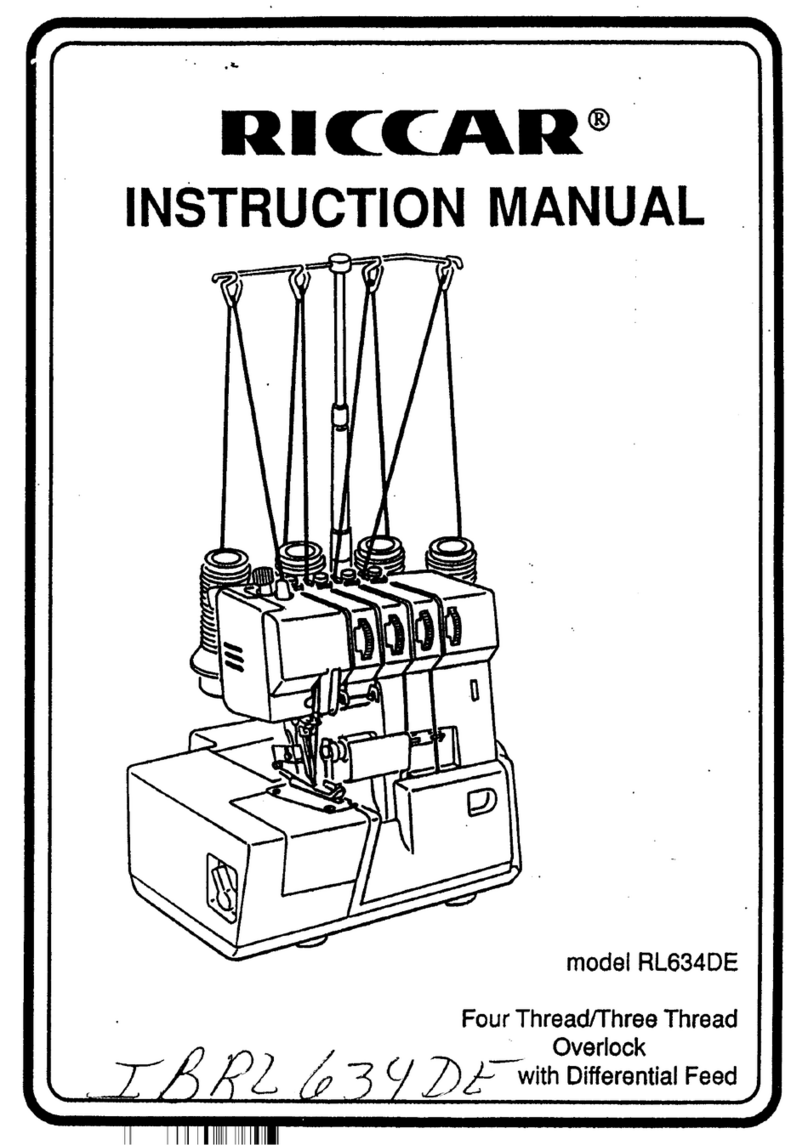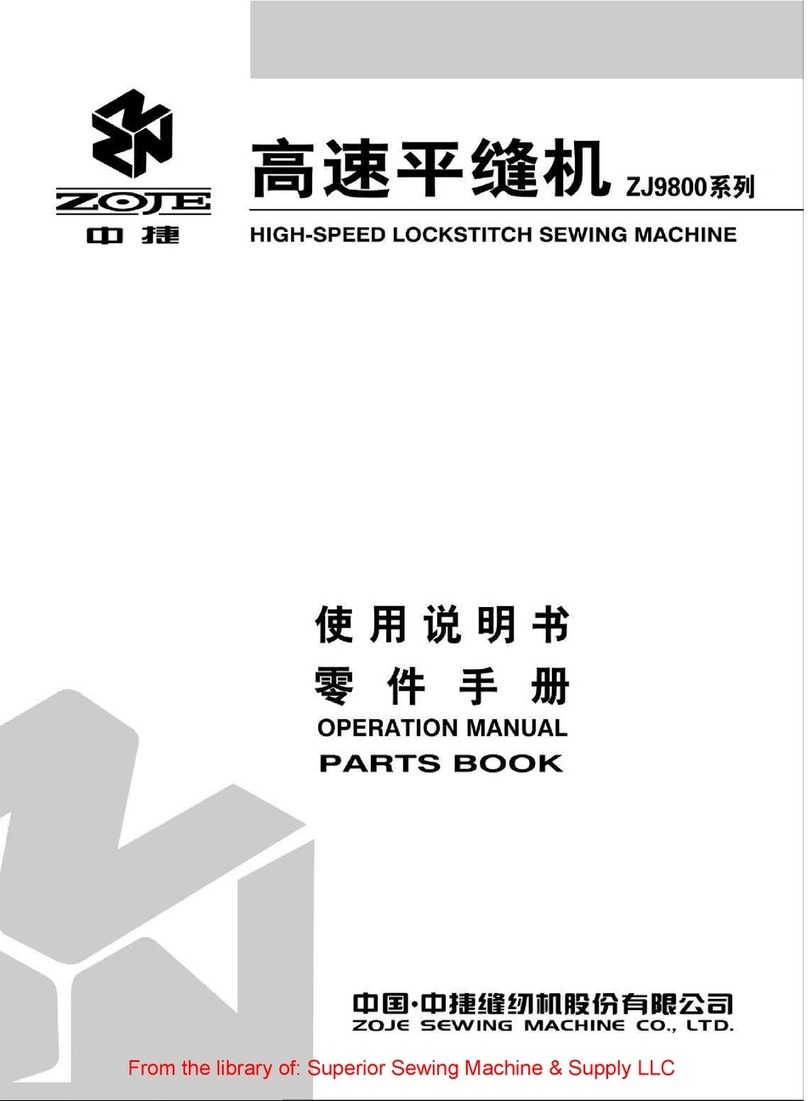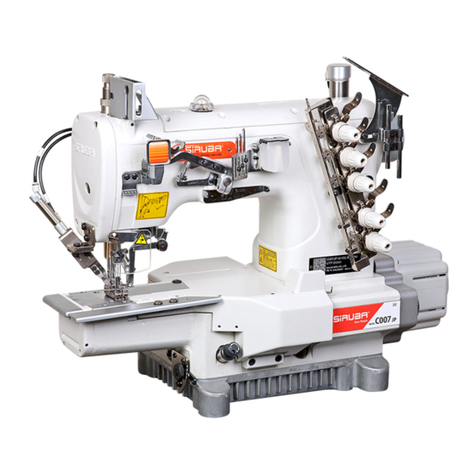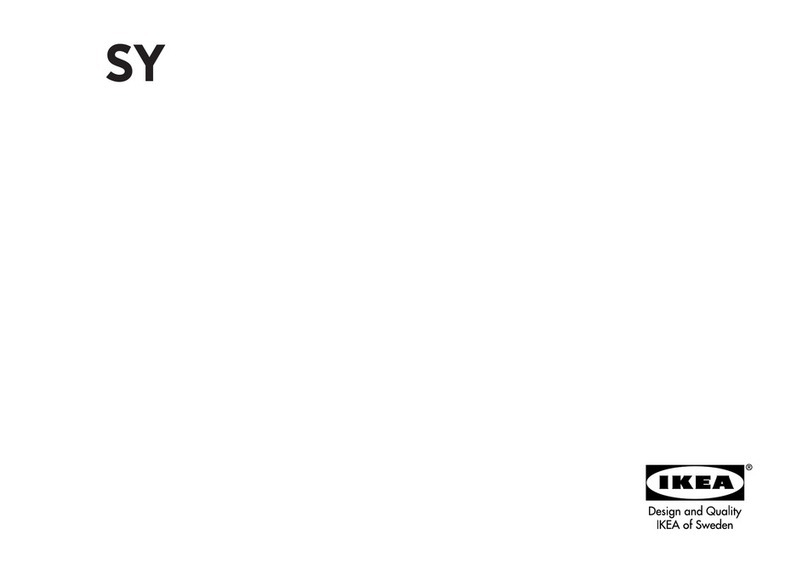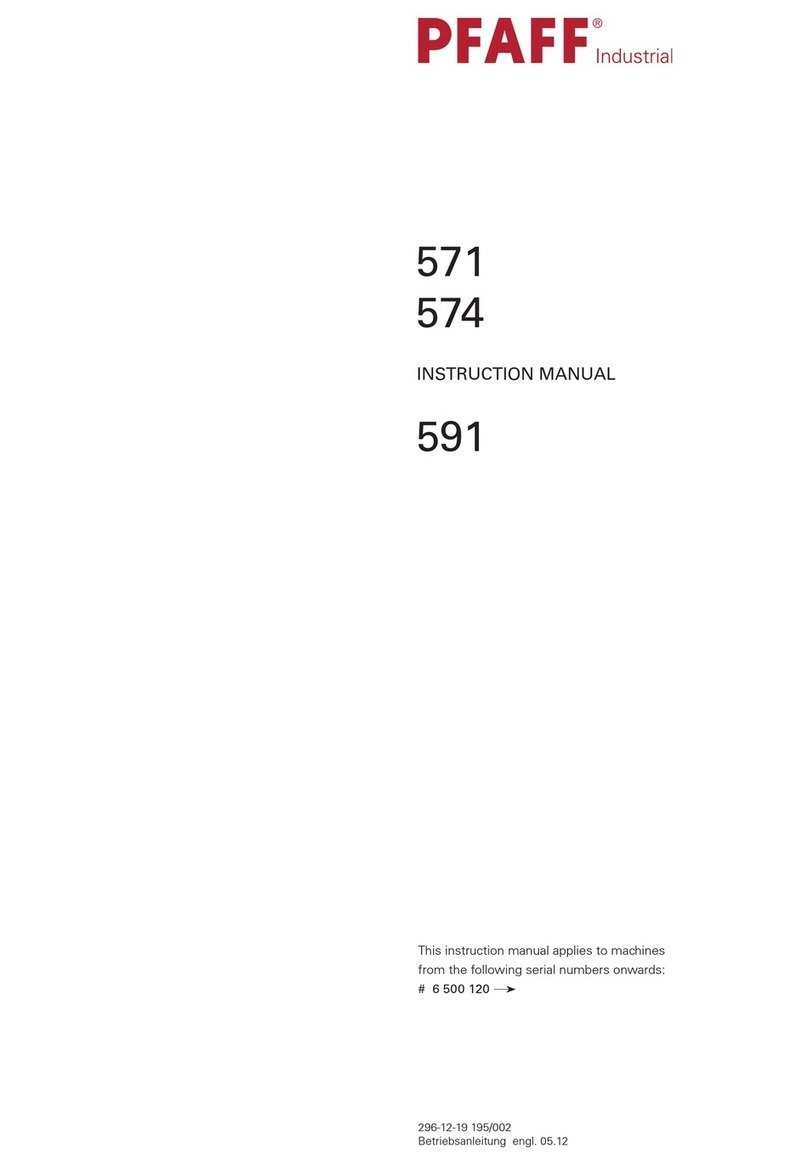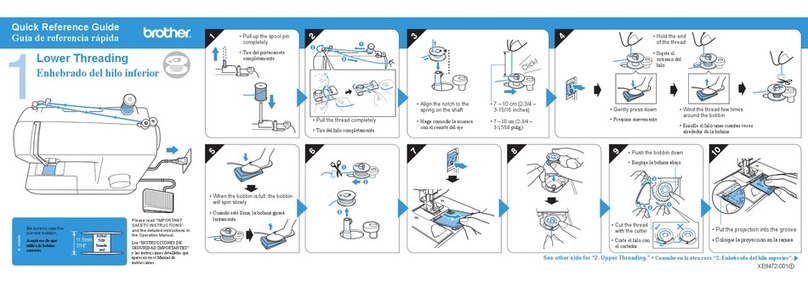Remove throat plate and turn hand wheel over
toward operator unti I lower timing mark on needle
bar is at lower edge of needle bar bushing on its
upward stroke. With needle bar in this position, the
di stance between the side of needle and point of
hook, as shown in insert in Fig. 16, should be .005".
This is approximately the thickness of a piece of
ordinary note paper.
Loosen counterbalance set screw, Fig. 16, and
move counterbalance away from bushing. Loosen one
hook set screw. Turn bal ance wheel toward operator
to position needle bar as instructed above. Loosen
the other hook set screw and bushing set screw.
Using a 114" brass drift pin, gently tap bushing jo
left or right as required. Press hook assembly against
bushing and tighten hook and bush ing set screws. Re-
check setting and replace counterbalance with hub
against bushing.
LOWER
TIMING
MARK
HOOK POINT
ENTERING
THREAD LOOP UPWARD
STROKE
NEEDLE EYE
1/16
INCH BE LOW
HOOK POINT
Set needle bar height and position of hook to or
from needle as previously instructed.
With needle threaded, turn hand wheel over toward
operator unti I needle bar reaches lowest point and
rises to position where lower timing mark on needle
bar, Fig. 17, is just visible at lower edge of needle
bar bushing. With needle bar in this position, the
point of the hook should be approximately 1116"
above the needle eye and entering the needle thread
loop.
Remove bottom cover. Loosen rotating hook shaft
pulley set screws, Fig. 18, or hook shaft bevel gear
set screws in gear driven machines. Turn shaft man-
ually until point of hook is in its correct position
to the needle eye and needle thread loop, as shown
in Fig. 17. While holding hook in this position, tighten

